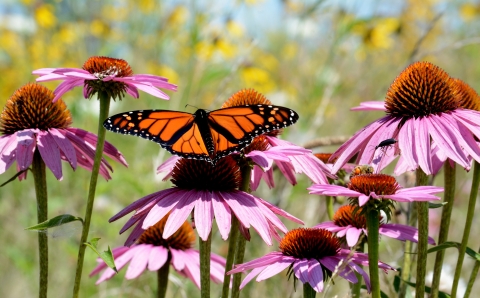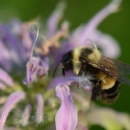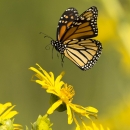Business communities
Everyone can play a role in monarch conservation. Whether your business is using the monarchs themselves, or your company is interested in powering these pollinators by adding a habitat to your lands, there are opportunities for all organizations to make a difference for monarchs.
Businesses creating pollinator habitat
The most common way to help monarchs and pollinators is by providing habitat with native milkweed and native flowers. Monarch conservation can occur on land ranging in size from quite small to very large, including landscaping around buildings and parking lots, roadsides and gardens. Monarch butterflies benefit most from an approach that encourages and incentivizes landowners to add milkweeds and nectar plants and implement actions to maintain pollinator habitat.
A Conservation Benefit Agreement is a voluntary agreement involving private or other non-federal property owners where the actions in the agreement contribute to the conservation or recovery of the agreement’s covered species.
In exchange for their help with conservation, participating property owners receive formal assurances from the U.S. Fish and Wildlife Service that we will not require any additional or different management activities by the participants without their consent.
Our Partners for Fish and Wildlife program offers technical and financial assistance for willing landowners who would like to implement conservation measures on their private lands.
Additional support may be available through the Natural Resource Conservation Service or state natural resource agency landowner programs.
Businesses using monarch parts
Under our proposed 4(d) rule, collection and possession of dead monarchs is allowed. Collection of live wild adult monarchs and killing them for preservation purposes is prohibited under the 4(d) rule.
Businesses raising monarchs
Under our proposed 4(d) rule, if you handle, raise, rear and/or sell greater than 250 monarchs per year, you will need to apply for the appropriate permit from the U.S. Fish and Wildlife Service. If 250 or fewer per year, a permit is not required.
A permit from USDA-Animal and Plant Health Inspection Service (APHIS) is required for the importation, interstate movement and environmental release of butterflies, including monarchs. In addition, APHIS does not allow the movement of monarchs across the Continental Divide for environmental release.
Any movement of monarchs across State lines for environmental release requires a permit from APHIS; however, APHIS uses 250 monarchs as cut-off for their different permit types for moving butterflies for environmental release. We considered this as a basis for the 4(d) rule and concluded that the overall impact of collecting/rearing/selling/releasing or handling/tagging 250 or fewer individual monarchs per location or facility (e.g., home, botanical garden, school, business or research facility) is not expected to negatively affect conservation and recovery efforts for the monarch butterfly.
We applied the 250-threshold to each type of activity (collection, captive rearing, sale, scientific and educational purposes) for monarchs, but we are seeking comment on this number and why it should or should not vary for different activities.
Will captive breeding and captive rearing help recover the species?
We do not consider captive breeding to be a tool to help recover the monarch due to the risks of disease and loss of genetic diversity. Recent analysis has shown that commercially bred monarchs may be genetically distinct from North American lineages. It is unknown to what extent the genes carried by these monarchs are maladapted for migration or could negatively impact the wild population. Years of indoor rearing and going through unnatural selection may lead to traits that might not benefit migration. Thus, purchasing monarchs from breeders and releasing them into the wild is not considered an activity that contributes to the health of monarch butterfly populations. Additionally, captive rearing can pose risks to wild populations through the spread of diseases.
We recognize that collecting, captively rearing and releasing monarchs has inspirational and educational value. Because of this, we included exceptions in our proposal for nonlethal collection, possession, captive rearing, release, scientific research and educational activities of 250 or fewer monarchs per year at any one location or facility (such as a home, botanical garden, school, business or research facility). The overall impact of these limited activities is not expected to negatively affect conservation and recovery efforts for the monarch butterfly. These exceptions do not apply to wild clustering monarchs.
This does not mean that people will not be able to release, handle or sell more than 250 monarchs. Researchers, breeders and butterfly houses working with more than 250 individuals will need to obtain a permit from the U.S. Fish and Wildlife Service through the same permitting process as when working with any other federally threatened and endangered species.
If we were to identify captive breeding and release as a recovery action, then we would need to develop a captive propagation and reintroduction plan as well as a recovery plan that called for those activities as necessary for the species’ recovery. If the purpose was for recovery and not just for sale, our agency would issue section 10 recovery permits for captive rearing of more than 250 monarchs at any one location.





